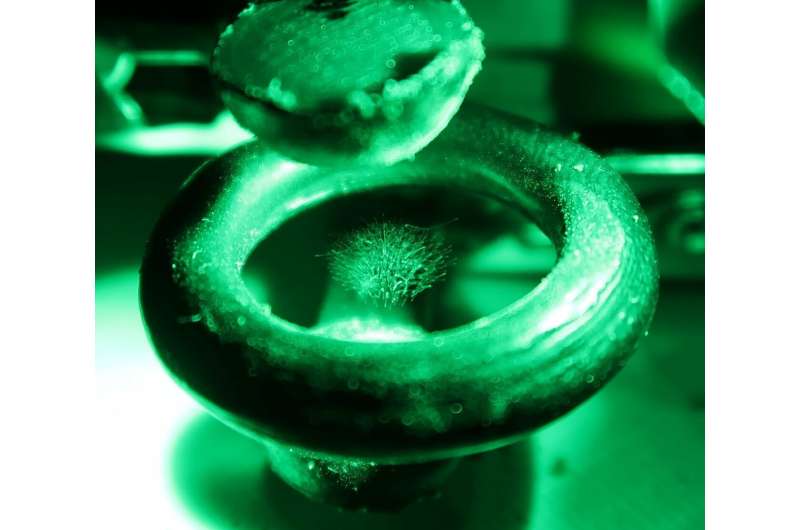How to build a 3-D-printed particle trap with free CERN schematics

CERN is synonymous with accelerators, designed to boost particles to close to the speed of light. But what if you want to slow down a particle and hold it in place while you study it? Particle traps are devices that use electromagnetic fields to suspend particles – macroscopic or elementary – in stasis long enough to do so. At CERN, experiments such as GBAR use ion traps to capture antihydrogen ions for research. In the case of antimatter, it is particularly important to use electromagnetic fields in vacuum chambers so that the antiparticles do not come into contact with normal matter – if they were to do so, they would annihilate instantly in a small burst of energy.
Now, thanks to 3-D-printing technology, you can build your own particle trap like the one at GBAR, using schematics developed by the S'Cool LAB team at CERN. Released freely under the CERN Open Hardware Licence, the schematics come with a set of instructions and tutorials that help bring cutting-edge technology into the classroom or home. Of course, the S'Cool LAB particle trap won't help you with antimatter research – it is best suited for suspending macroscopic particles such as cinnamon or lycopodium spores. But its design principles share a lot in common with the larger devices used in particle-physics laboratories.
At the heart of its design is an electric quadrupole a special configuration of positively and negatively charged electrodes. The fields generated by these electrodes connected to an AC power supply limit the direction in which the particles can travel, effectively trapping them in the middle. Electrically charged particles dropped into the quadrupole ion trap oscillate along the electric field lines, allowing you to observe their orientation in three dimensions.
The S'Cool LAB facility offers high-school students and teachers the chance to take part in hands-on particle-physics experiments on-site at CERN. But they also have a variety of openly licensed tools that anyone with access to 3-D printers can make. These include cookie cutters to produce your very own quark-themed cookies, puzzles that challenge you to form particle systems according to the rules of the Standard Model and a scale model of the toroidal magnetic system of the LHC's ATLAS detector.
Provided by CERN




















